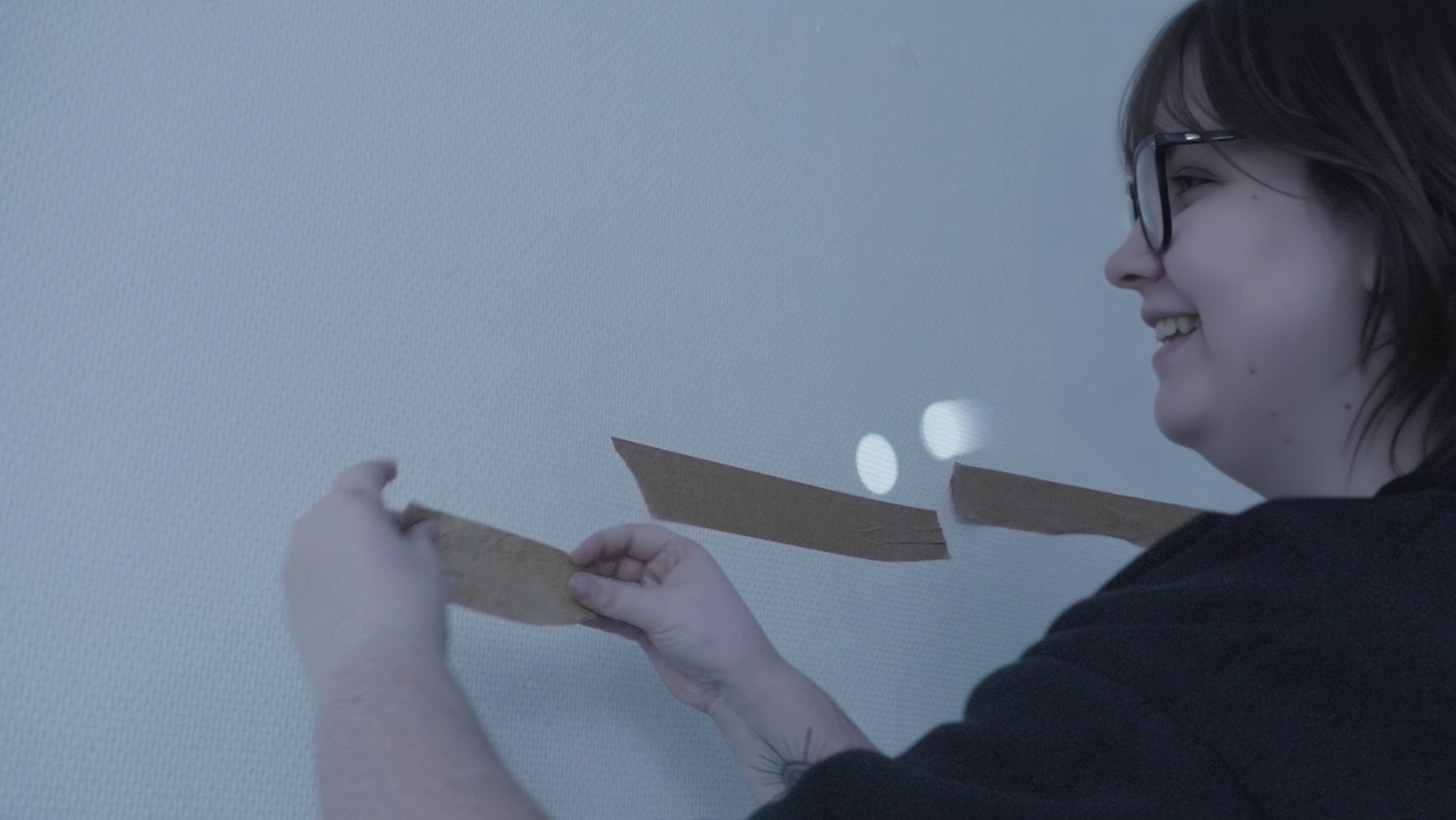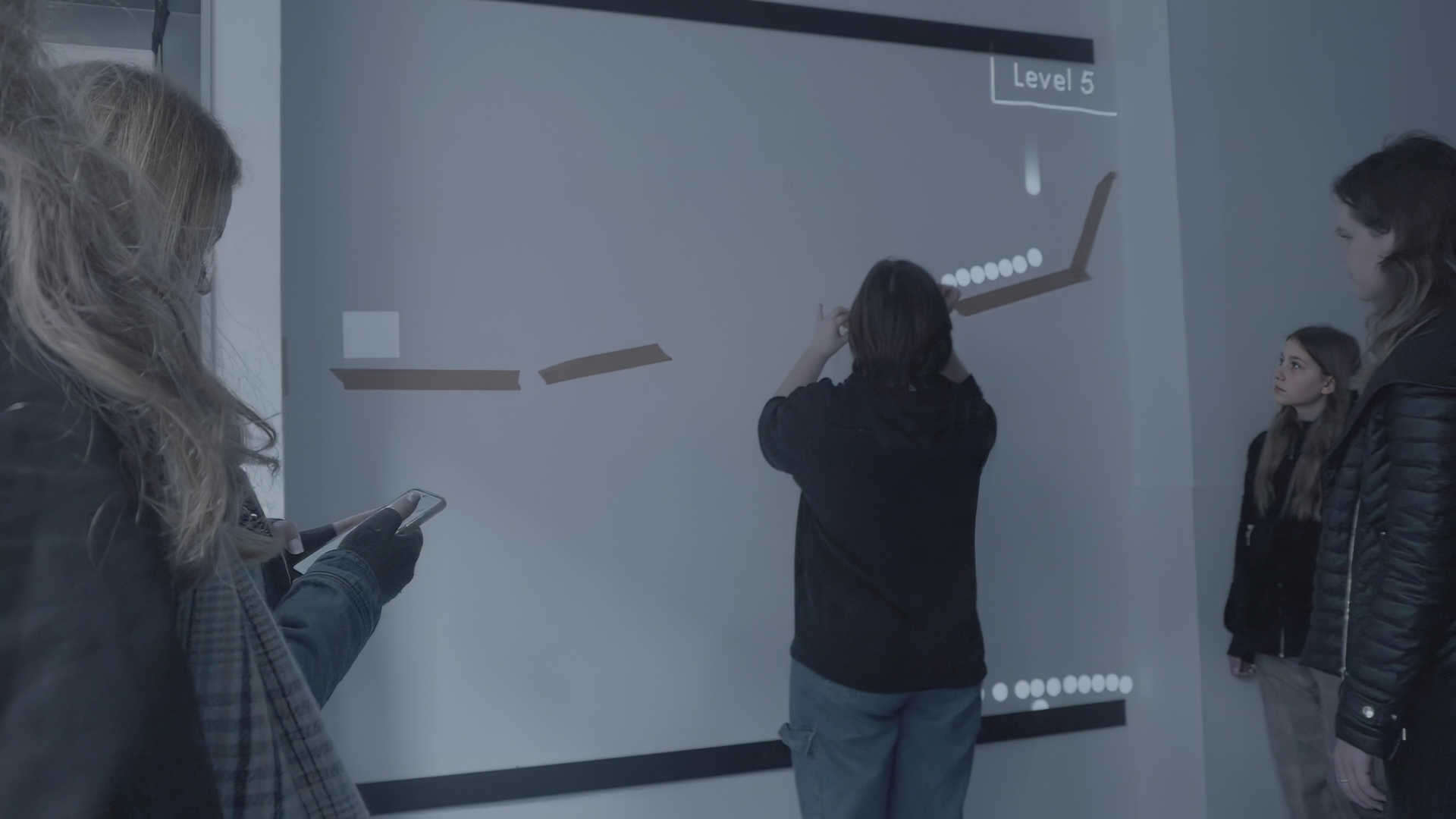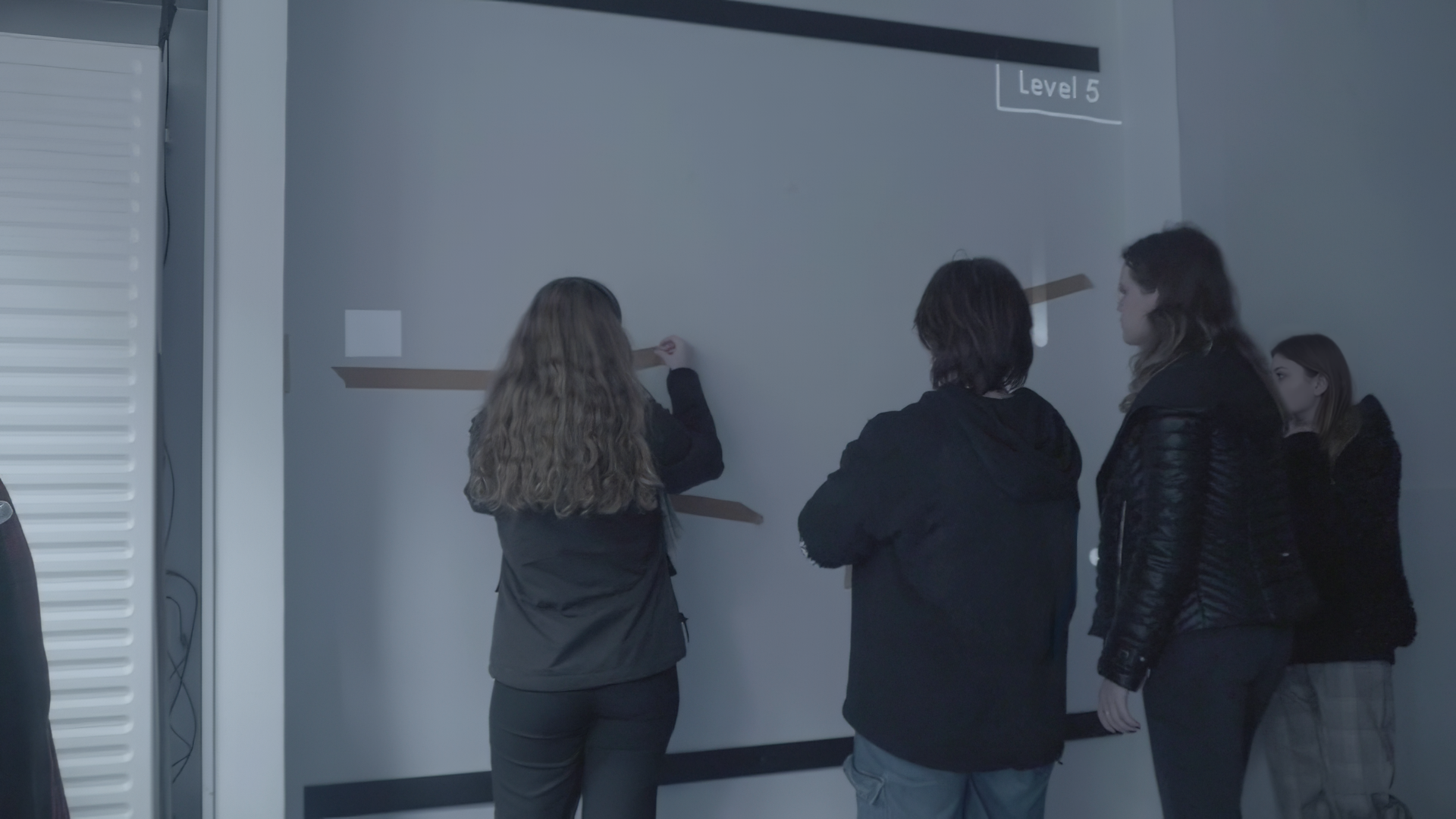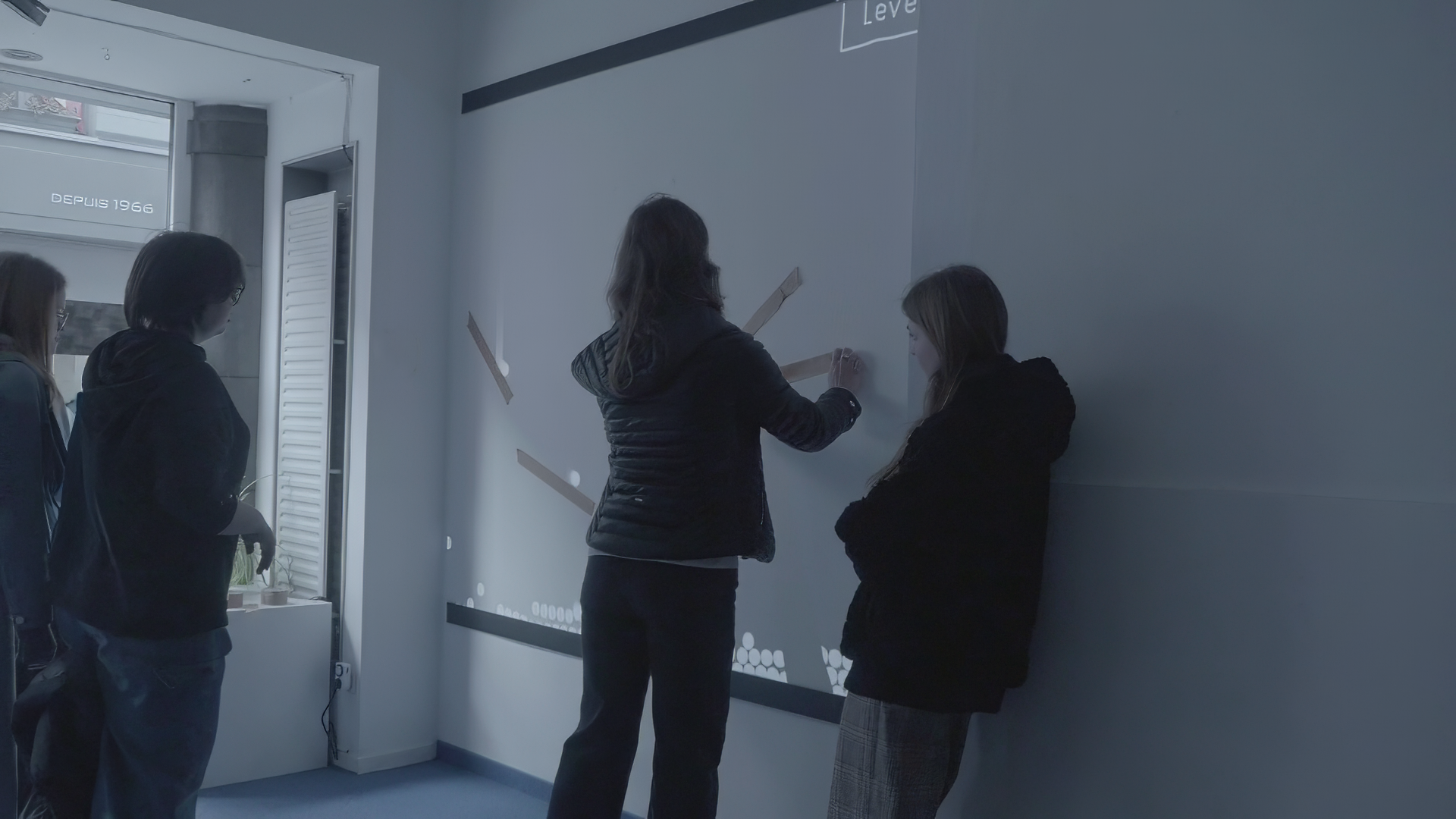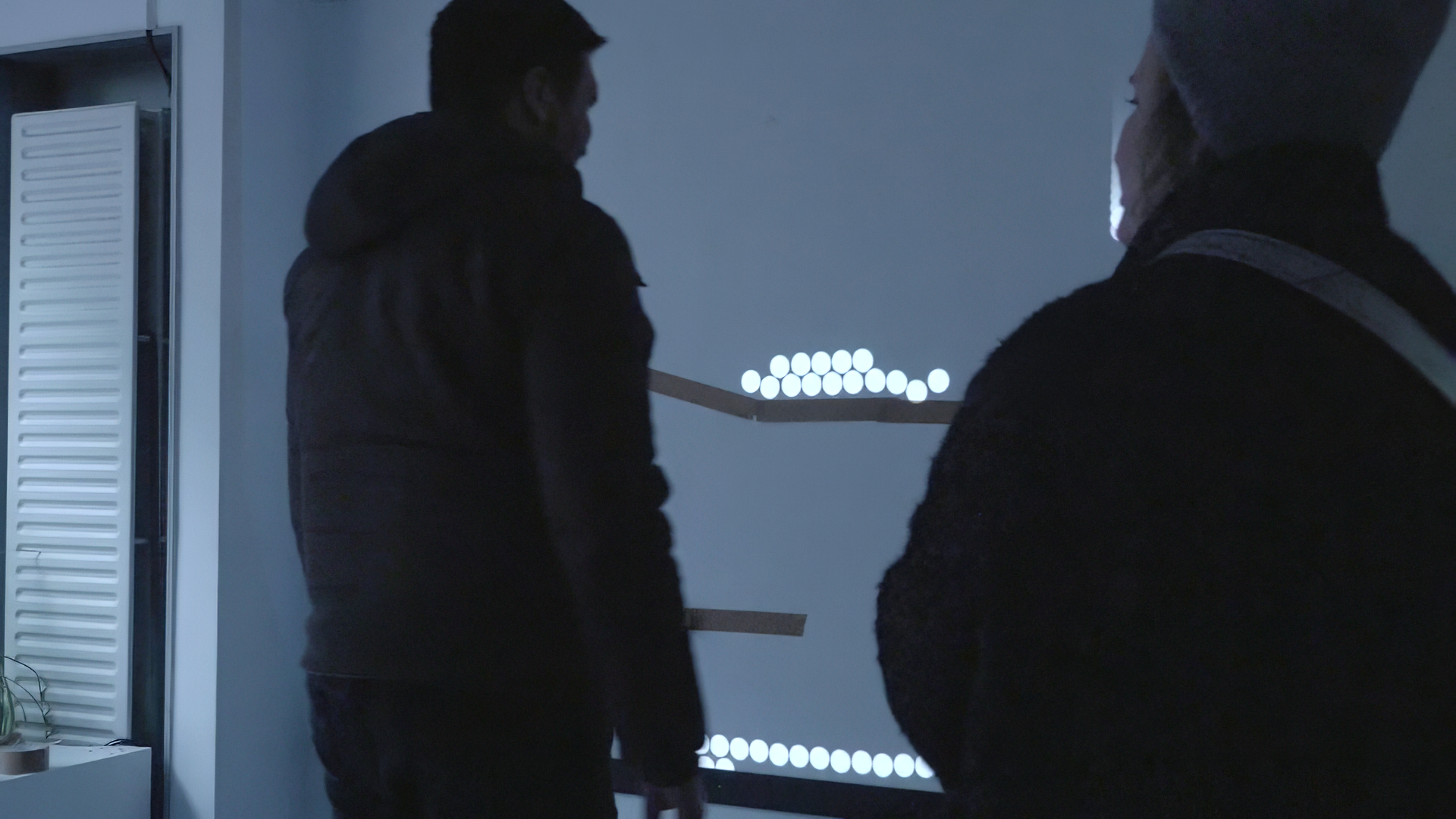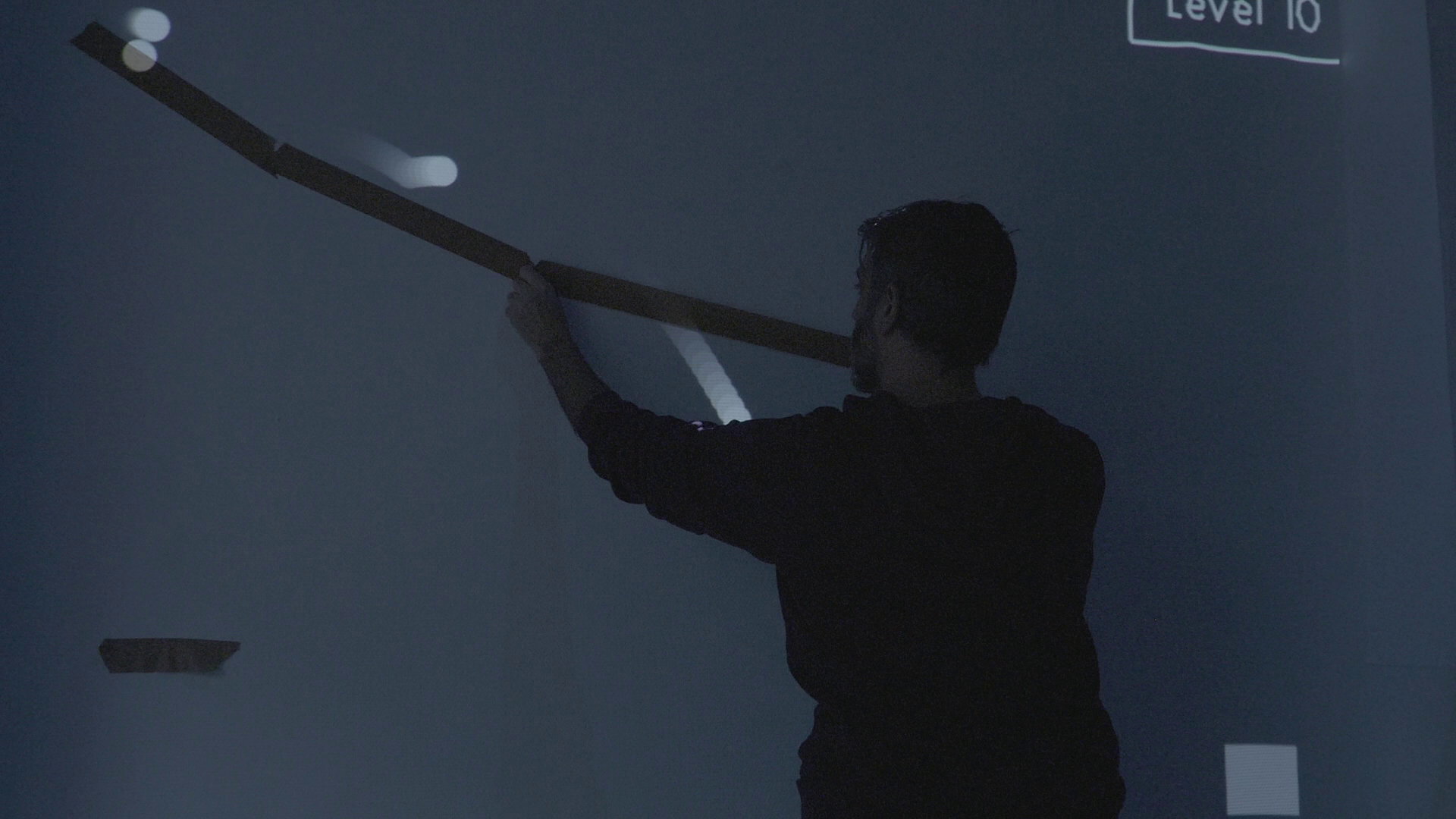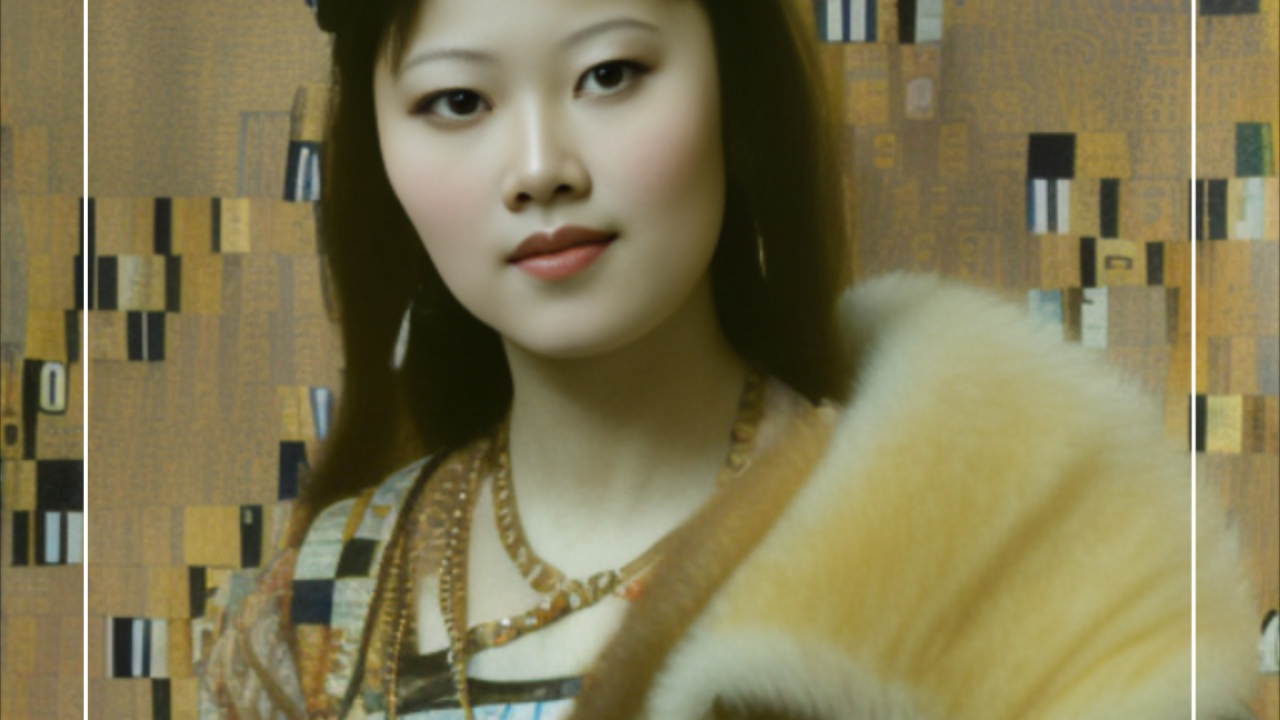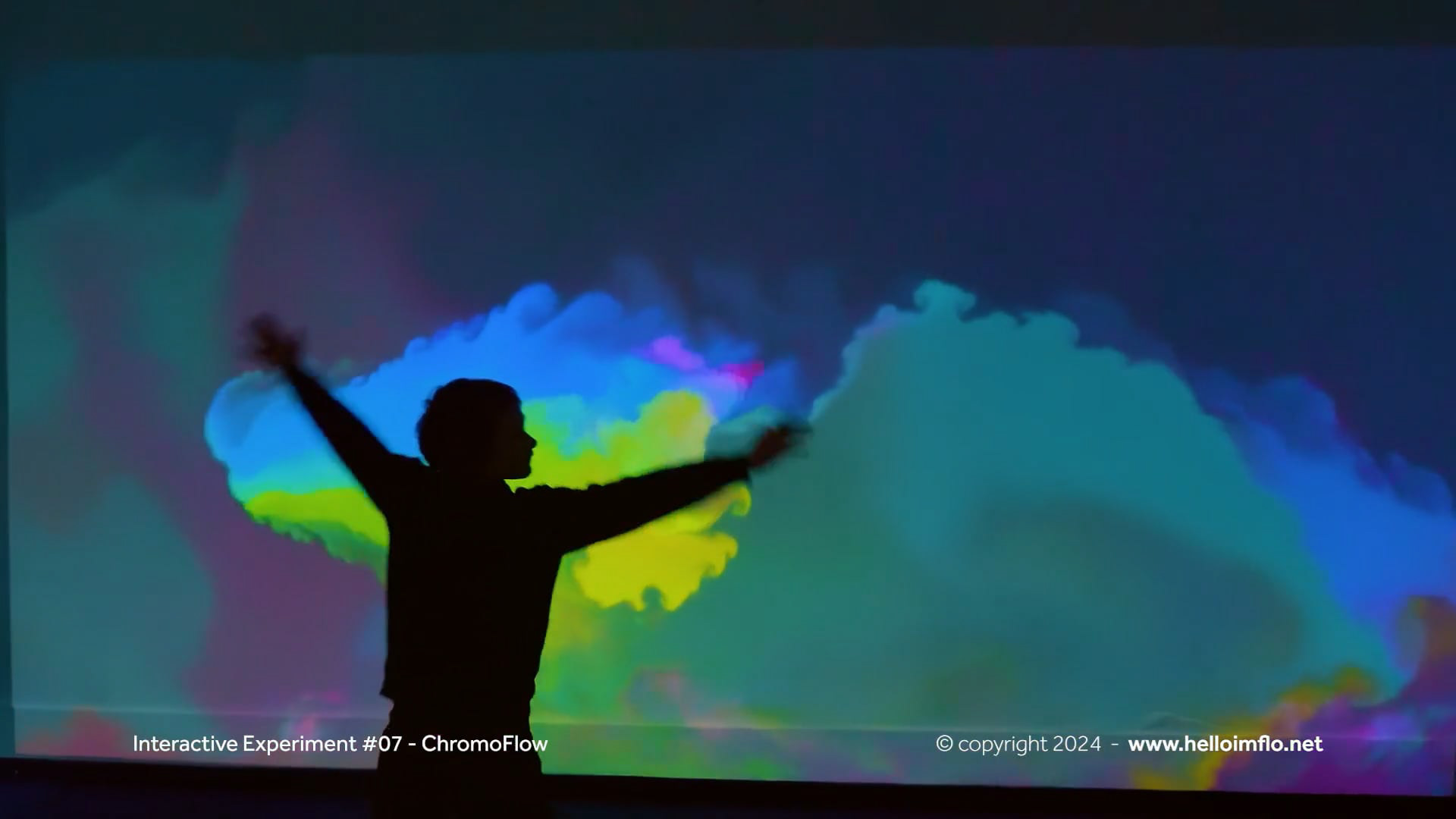Discover "Boing Boing", a captivating interactive installation that blends the virtual and physical worlds to offer a unique and playful augmented reality experience.
Visitors are invited to interact with bouncing balls projected onto a wall, creating a tangible connection between digital and physical elements.
With 30 different levels to explore, each offering its own challenges, "Boing Boing" promises fun and excitement for participants of all ages.
With 30 different levels to explore, each offering its own challenges, "Boing Boing" promises fun and excitement for participants of all ages.
General Information
Title: Boing Boing
Category / Type: Interactive, playful, immersive installation
Year of creation: 2024 (prototype)
Artists / collaborators: Florent Schirrer
Category / Type: Interactive, playful, immersive installation
Year of creation: 2024 (prototype)
Artists / collaborators: Florent Schirrer
Artistic Statement / Concept
Main theme / core idea:
Merging the physical and virtual worlds through playful, collective interaction.
Merging the physical and virtual worlds through playful, collective interaction.
Concept:
Boing Boing explores the boundary between the tangible and the digital. By placing simple real objects on a wall, participants influence a projected virtual world in real time.
A physical gesture becomes a digital command, the game acts as a bridge between material and simulation.
The project questions how we can act upon a digital space without direct technological interfaces, using only space, body, and matter.
Boing Boing explores the boundary between the tangible and the digital. By placing simple real objects on a wall, participants influence a projected virtual world in real time.
A physical gesture becomes a digital command, the game acts as a bridge between material and simulation.
The project questions how we can act upon a digital space without direct technological interfaces, using only space, body, and matter.
Material / symbol:
The installation uses simple materials like tape, small objects, a wall, and projected light. These physical traces become the connectors between two realities, turning the wall into a hybrid playground.
The installation uses simple materials like tape, small objects, a wall, and projected light. These physical traces become the connectors between two realities, turning the wall into a hybrid playground.
Core experience:
The visitor quickly realizes that a small physical gesture can alter the behavior of digital elements. Through experimentation and collaboration, the game becomes a space for discovery and tangible interaction with virtual phenomena.
The visitor quickly realizes that a small physical gesture can alter the behavior of digital elements. Through experimentation and collaboration, the game becomes a space for discovery and tangible interaction with virtual phenomena.
Interaction Scenario
Initial action:
The visitor enters and sees bouncing balls falling down the wall. By placing objects on the surface, they realize they can influence their path.
The visitor enters and sees bouncing balls falling down the wall. By placing objects on the surface, they realize they can influence their path.
Progression:
Each level defines a start and end zone (green square). The player must guide the virtual balls to land and stay in the target zone for a few seconds to complete the level.
Each level defines a start and end zone (green square). The player must guide the virtual balls to land and stay in the target zone for a few seconds to complete the level.
Collective interaction:
The installation encourages teamwork — participants coordinate their actions, plan trajectories, and share strategies.
The installation encourages teamwork — participants coordinate their actions, plan trajectories, and share strategies.
Feedback:
Immediate visual response reinforces the impression of physically shaping digital behavior.
Immediate visual response reinforces the impression of physically shaping digital behavior.
End of experience:
When a ball remains in the green zone long enough, the level is validated and the next one begins.
Thirty progressively harder levels are included; a timed version lets visitors compare their scores.
When a ball remains in the green zone long enough, the level is validated and the next one begins.
Thirty progressively harder levels are included; a timed version lets visitors compare their scores.
Setup / Technical Description
Physical elements:
- White wall or projection surface.
- UST projector
- Lightweight physical objects (adhesive tape, foam shapes, etc.)
- Infrared camera (Kinect or equivalent)
- Computer running TouchDesigner
- White wall or projection surface.
- UST projector
- Lightweight physical objects (adhesive tape, foam shapes, etc.)
- Infrared camera (Kinect or equivalent)
- Computer running TouchDesigner
Interactive components:
- Infrared depth camera for obstacle detection
- Optional: 1 or 2 lidars for enhanced precision
- Real-time collision simulation
- Infrared depth camera for obstacle detection
- Optional: 1 or 2 lidars for enhanced precision
- Real-time collision simulation
Visual or sound output:
Real-time wall projection. Digital balls bounce off real obstacles detected by the camera.
Real-time wall projection. Digital balls bounce off real obstacles detected by the camera.
Dimensions / space requirements:
- Interaction area: approx. 3–4 m wide × 2–3 m high.
- Lighting: semi-darkness or diffuse ambient light, avoid direct glare.
- Interaction area: approx. 3–4 m wide × 2–3 m high.
- Lighting: semi-darkness or diffuse ambient light, avoid direct glare.
Context and Logistics
Support / co-production: Self-produced project
Exhibition history:
FRACAS Gallery – Mons (Belgium), January 2024
FRACAS Gallery – Mons (Belgium), January 2024
Setup time:
Projector + camera setup: 1–2 hours
Calibration: 30 minutes
Projector + camera setup: 1–2 hours
Calibration: 30 minutes
Budget range:
€ 3000 – € 7000 (depending on configuration)
€ 3000 – € 7000 (depending on configuration)
